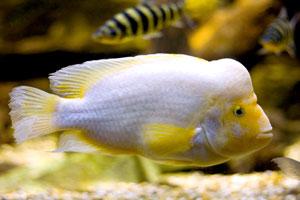Genetic & Developmental Basis of Color in Cichlid Fish
Margaret Sefton – Hector Fellow Axel Meyer
Cichlid fish are well-known for their beautiful colors and multitude of body shapes. They are found in the East African Rift lakes where they have formed so-called adaptive radiations, in which hundreds of new species originated extremely quickly – sometimes within less than 100,000 years. This thesis, under the supervision of Hector Fellow Axel Meyer, focuses on the genetic basis of adaptation and diversification in cichlids by examining genes involved in color pattern development.
In the first project the regulatory basis of coloration in several species of cichlids is investigated. Using next-generation sequencing technologies, it will be searched for genes that might cause the differences between various cichlid species and characteristics that differ between males and females. One of the main research questions concerns the relative roles of structural changes (the emergence of new genes) and regulatory changes (existing genes used in a new developmental context) during the process of divergence.
The second project, developing an experimental framework for the in vivo testing of gene function in the Midas cichlid, will use innovative genome engineering approaches.
By combining a model system from the fields of ecology and evolutionary biology with techniques adapted from genetic model organisms, such as the zebrafish, novel hypotheses about the involvement of specific genes in the evolution of new species will be tested – something even Darwin could not have dreamed of.

Cichlid fish
Margaret Sefton
University of KonstanzSupervised by

Axel Meyer
BiologyHector Fellow since 2011

